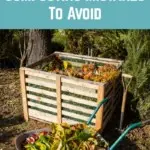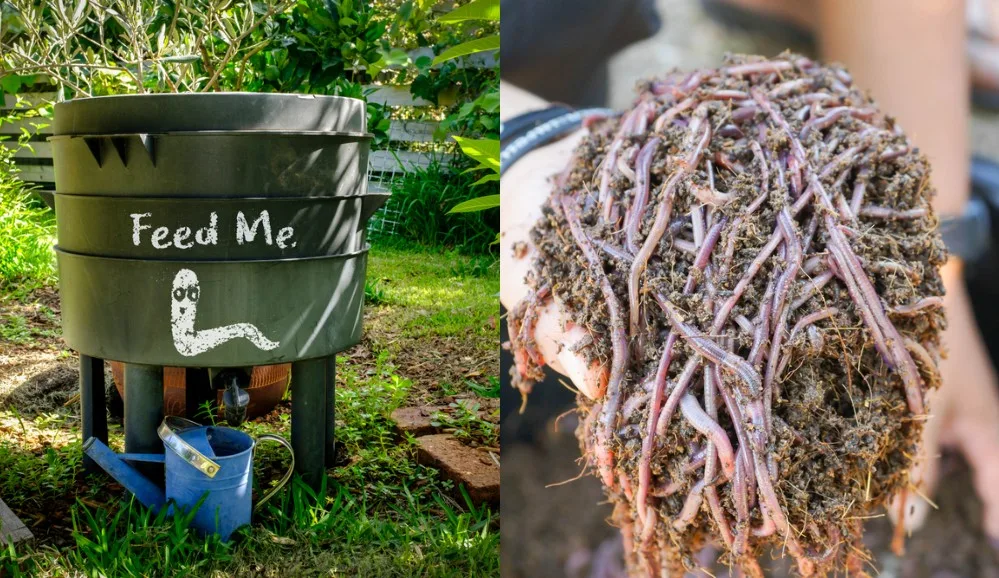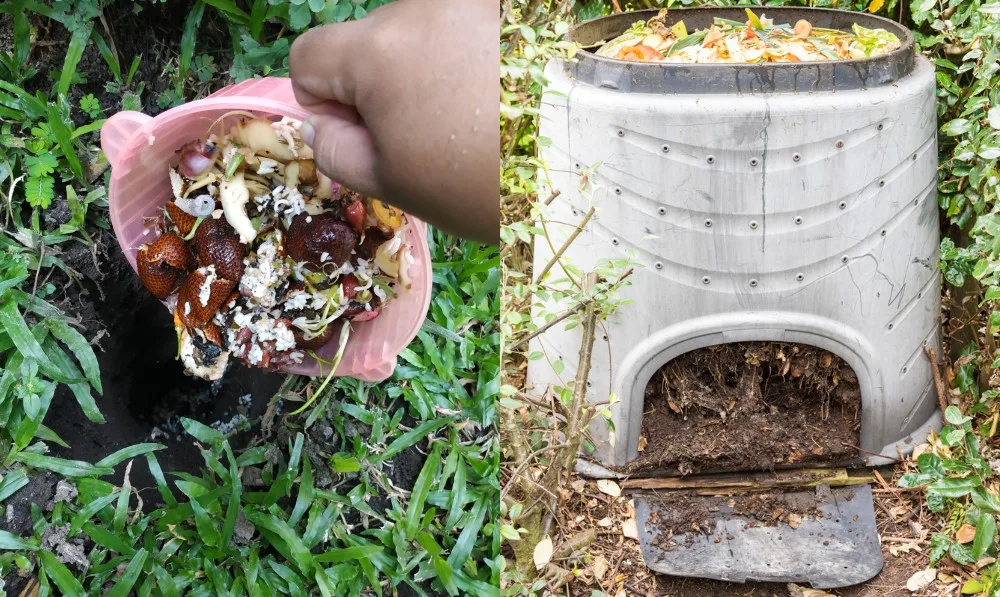
Composting is not rocket science.
It is basically taking advantage of nature’s recycling system to return nutrients to the garden ecosystem.
There is a lot of information out there telling you how to create the perfect compost. But often, you don’t need to fuss about it.
Composting is far easier and more straightforward than most people imagine. And you can do it wherever you live.
Even when you make a few mistakes, decomposition will still usually take place. Simply dump organic materials on the ground and they will eventually break down.
But composting well can be a great way to increase yield in an organic garden.
To make sure you don’t have any issues, here are 20 common composting mistakes to avoid:
1. Not Composting at All!
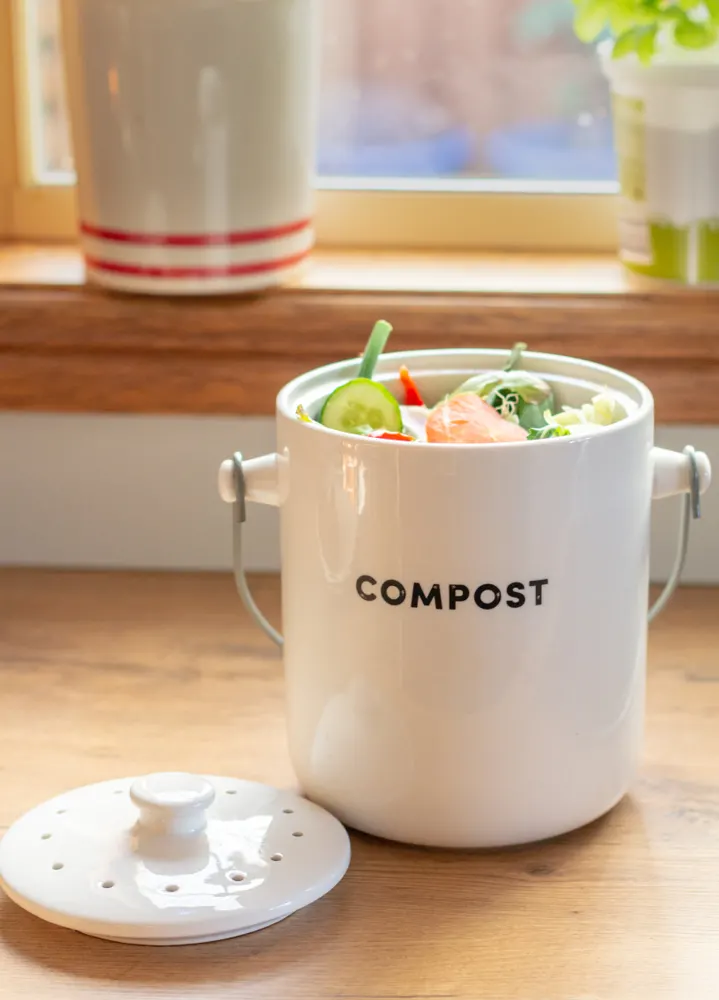
First of all, it is worthwhile mentioning that the biggest mistake you could possibly make is not composting at all. If you do not already compost food waste from your home, and organic materials from your garden if you have one, then you should get started right away!
There is a method of composting suitable for every situation – you just have to work out which one is right for you, and take the plunge.
2. Choosing the Wrong Composting Method
No matter where you live and what your situation may be, there is a composting method that is right for you. But it is important to think carefully about which composting method to choose.
In situations with plenty of outside space, there are a number of different options to consider. For example, you might have:
- A simple cold-composting compost heap (or more than one).
- Cold composing bins or other containers.
- An insulated heap or bin, or special containers for hot composting. (Hot composting simply involves decomposing materials at higher temperatures, which can speed up the process.)
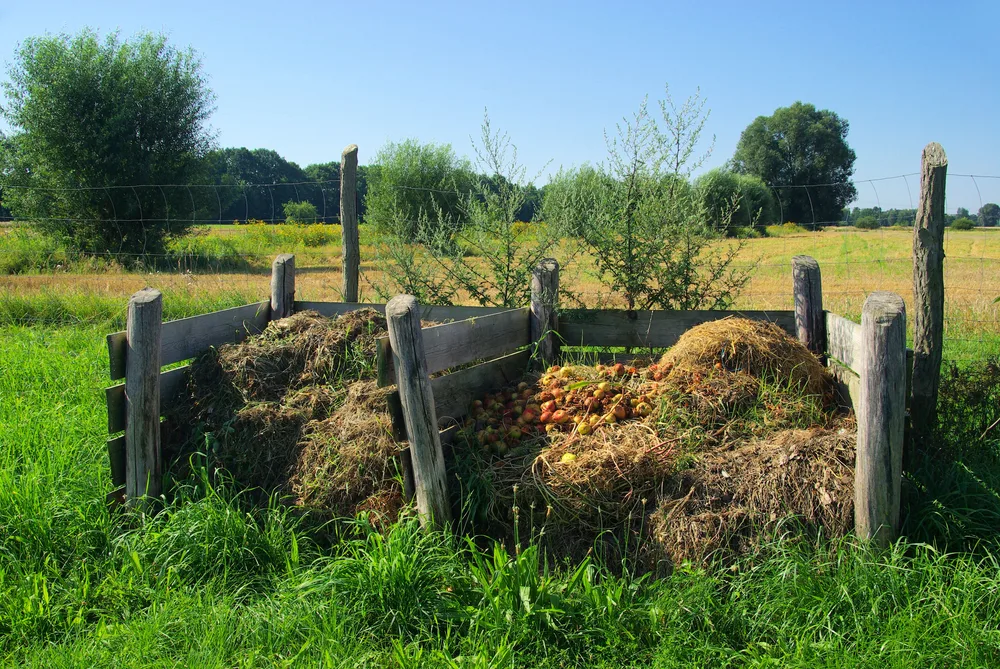
You might also simply compost materials directly in your growing areas, through pits or trenches filled with organic matter, or in new ‘no dig’ lasagna beds or hugelkultur mounds.
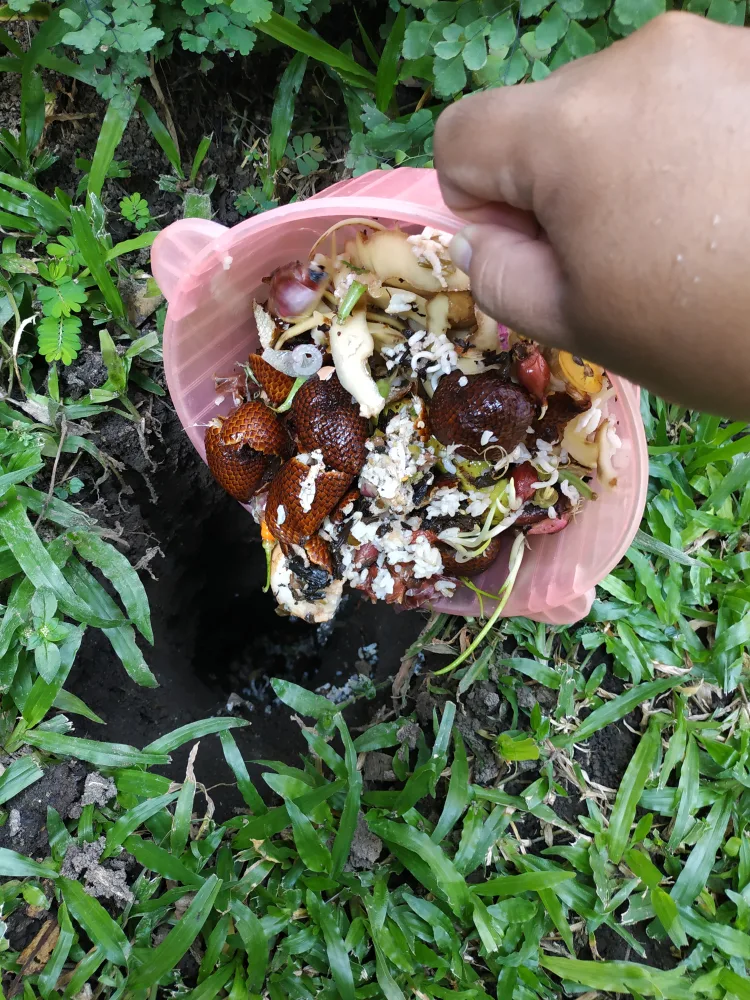
Whether you have a large garden, a small one, or even no garden at all, you might also consider:
- Vermicomposting (composting with the help of special worms).
- A compost tumbler. (Using a tumbler can aid in aeration, and is another potential way to speed up the process.)
- Bokashi buckets, to ferment food scraps before composting. (This too can speed up decompostion.)
It is important to make sure you choose the right method or methods for your needs, and for where you live.
3. Putting the Composting System in the Wrong Place
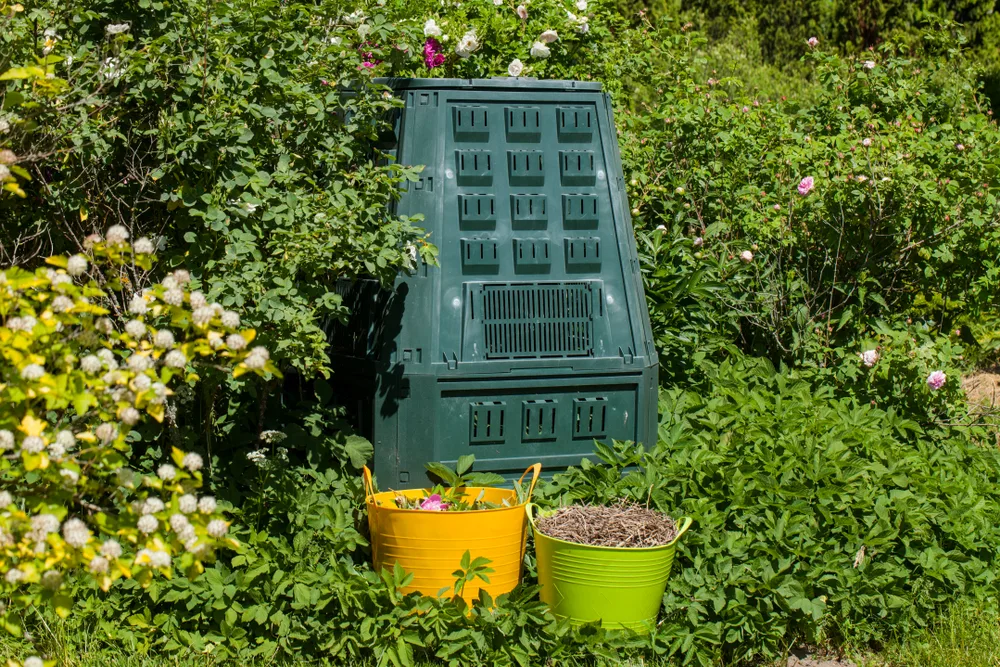
Whichever composting method you choose, it is important to put it in a suitable location.
One mistake I see all the time is gardeners who hide away the composting area – behind a shed, for example. Often, composting systems are placed with little regard to the environmental conditions on the site, or to the proximity to growing areas or other parts of the garden.
It is important to think about whether the site you have chosen can provide the right temperatures, water levels and other conditions for decomposition. But it is also important to think about how easy it will be to take materials to the heap, and deliver the finished compost to its final destination.
A composting area should be easily accessible from your kitchen, and from growing areas. So think about these things, as well as aesthetics, when choosing where to position it.
4. Choosing Methods That Make Compost Difficult to Get At Once Made
Personally, I do not favour composting bins or containers which require all the material to be tipped out or dug out before it can be sorted and used.
While there are plenty of easy options to choose, I myself prefer to have a simple area for my composting. I used old wood pallets to make a boundary for my heap, with a front that can easily be removed when it is time to get to the material inside.
If the compost is inaccessible, or hard to retrieve, you are far less likely to stay on top of it and get a sustainable system going.
5. Letting the Compost Get too Hot
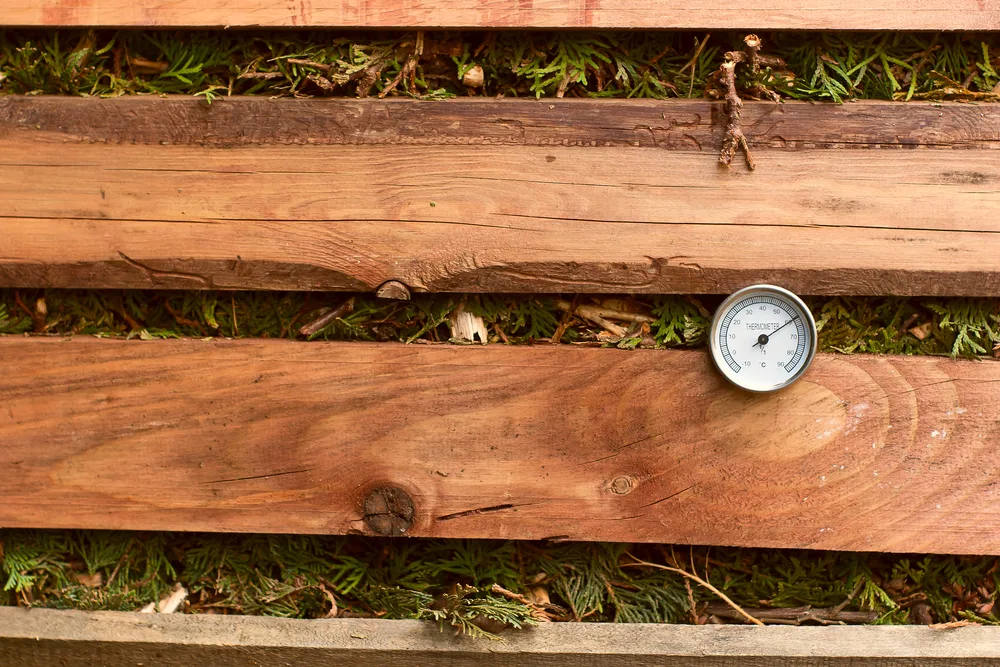
Hot composting is a different process to cold composting. It relies on different ecological processes and micro-organisms. Most home composting is cold composting.
Letting the compost get too hot can actually be counterproductive. It can lead to too much moisture loss and in extremis, may even kill the creatures you rely on to aid in decomposition.
Temperature is especially important in vermicomposting. Worms can become sluggish, or even die, if the temperatures within the system are too high.
Make sure the composting system is shaded in hot summer weather, and if you are composting indoors – think carefully about where you position it, and avoid placing it too close to heat sources such as radiators or stoves.
6. Letting the Compost Get too Cold
Letting the compost system get too cold can also be a problem. If you live in a cold winter area, and are composting outdoors, you may wish to think about insulating your compost to keep the process of decomposition going over the coldest months.
Composting in a cold climate will always slow down considerably over the winter months. But taking steps to keep compost warmer can help you make sure you keep composting even when the weather is very cold.
Vermicomposting especially involves making sure that the worms which are helping you are safe. They will be able to function above around 50 F. So in cold weather climates, consider bringing a wormery indoors or under cover, or at least make sure you place it in a more sheltered spot.
7. Letting the Compost Get too Wet
When compost becomes too wet, it is likely that the mix will become less aerated. You may find that you transition to anaerobic processes, which will mean that the mix can begin to stink.
If you are composting with worms, the worms may drown in a compost container that is too filled with moisture. But in any system, it is likely that letting the heap get too wet will decrease the rate of decomposition.
If you are composting in a wormery, or some other container with a base, it is a good idea to have a faucet near the base, and a drainage sump, so you can drain off excess fluids. (The fluid you drain off can also be used, however, in a liquid plant feed.)
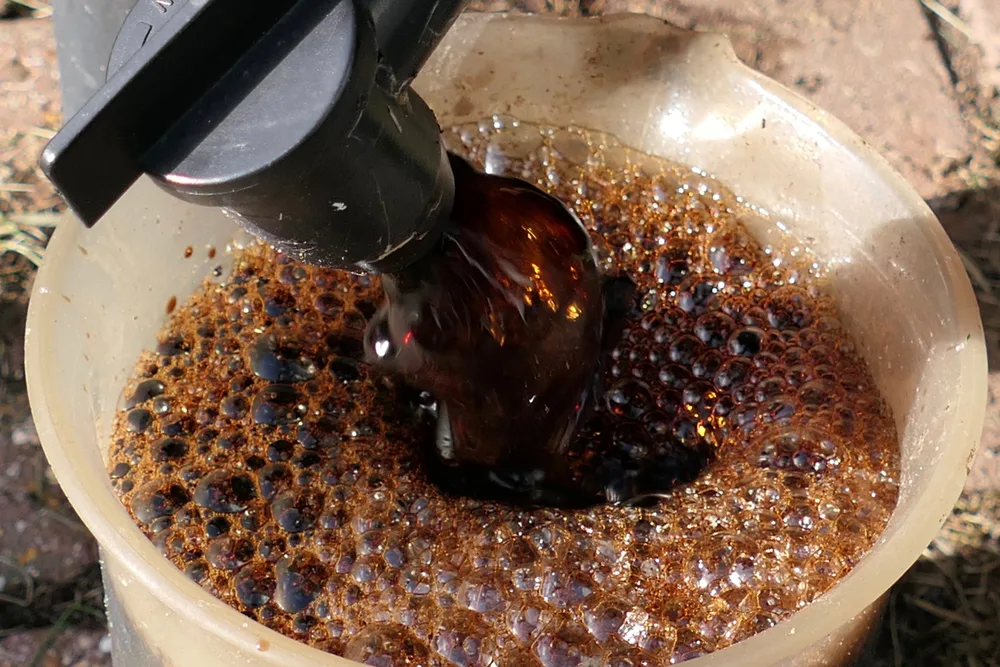
If you are composting on the ground, and not in a sealed container of some kind, letting the compost get too saturated can also increase the rate of nutrient leaching. Goodness from the compost can be washed away into the ground.
So it is a good idea, in areas which experience heavy rainfall, to make sure you can cover over the compost when heavy rains threaten.
8. Letting the Compost Get too Dry
Letting the compost get to dry can be just as big a problem as letting it get too wet.
You will find that if the compost dries out too much, the rate of decomposition will decrease significantly. It is important to remember that we rely on living organisms to create compost, and like other living organisms, they do need some water to live.
If the mix in a composting container or bin does get too dry, simply water it a little. The same goes for outdoors compost heaps that are drying out excessively in the summer sun. J
ust as adding a thick mulch on your growing areas can reduce the rate of moisture loss, so too you can reduce moisture loss from a compost heap by covering it with a good layer of carbon rich organic material.
Making sure the system is shaded in high summer can also help reduce water loss.
9. Forgetting that Oxygen is Essential for Aerobic Decomposition
In home composting, most systems rely on an aerobic decomposition process. This means that oxygen is required. The micro-organisms and other creatures in your compost heap need to breathe.
One common issue that people have with their composting systems is that they start to stink. Often, this is because the mix has become anaerobic (not enough oxygen is getting in).
Of course, a lack of oxygen in a vermicomposting system can kill your worms. But in any aerobic composting system, inadequate aeration can be a problem.
To aerate our compost, one simple step we can take is to turn it. A compost tumbler is one option – or you can rely on a simple garden fork to turn a heap by hand. This may not be absolutely necessary. But it certainly can help ensure that things go quicker, and more smoothly.
10. Adding too much Nitrogen Rich Material at Once
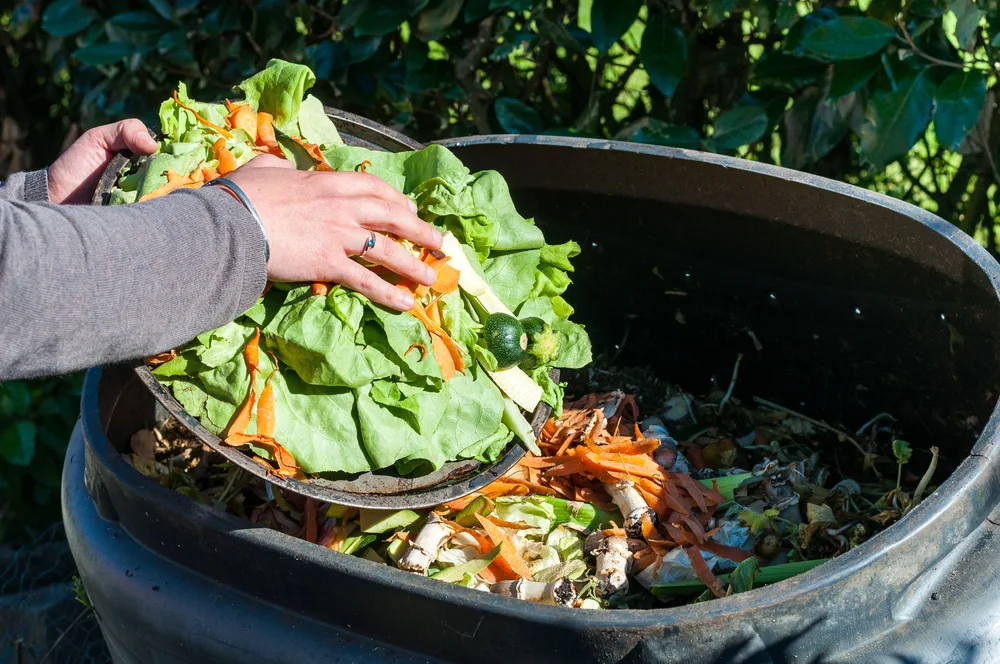
One of the things that can turn your heap anaerobic and cause it to smell is adding too much nitrogen rich material at once. Nitrogen rich materials include fruit and vegetable scraps, grass clippings, and green leaves.
Someone once asked me why their compost heap was stinking, and I easily determined that it was because they had added all the grass clippings from their ¼ acre lawn in one go.
It had become a huge, slimy pile. As soon as he broke up the pile and incorporated other materials, the heap became much more pleasant once more.
Every time you add nitrogen rich materials to your composting system, you should also add a good quantity of carbon rich material at the same time. (Cardboard, straw, wood shavings etc..)
11. Adding too much Carbon Rich Material at Once
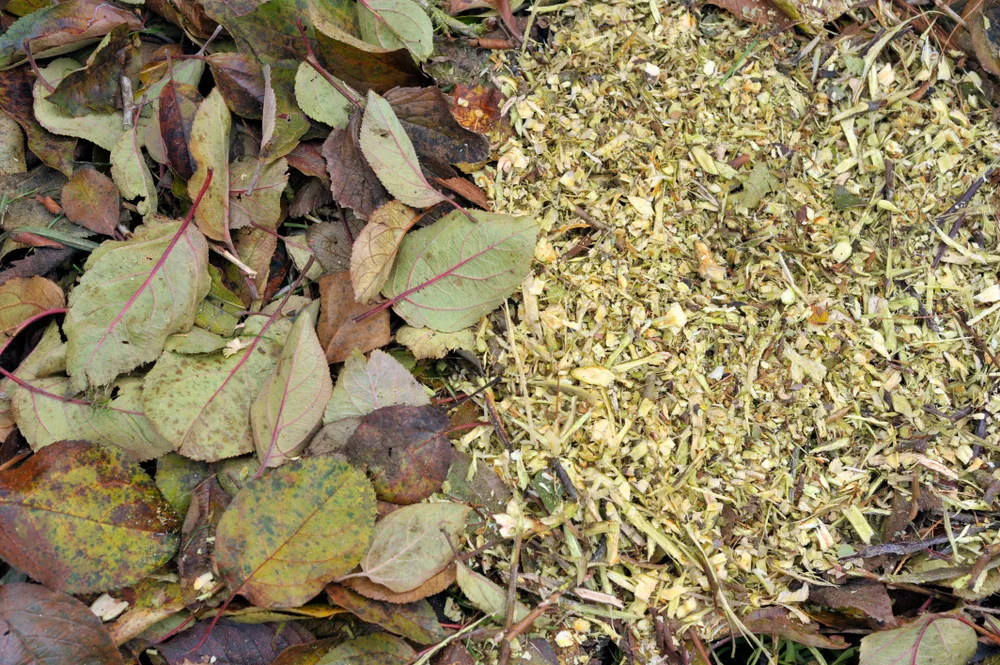
It is a good idea to always think about your composting system in terms of ‘green’ nitrogen rich and ‘brown’ carbon rich materials.
Creating a good balance between these two elements is a good way to ensure good quality results.
If you add too many brown, woody materials to the heap without much nitrogen rich material, then the material will take far longer to break down. Nitrogen speeds up the process. And with too many brown materials, you won’t be able to get the same nutritional composition for the finished compost.
12. Adding Things That Won’t Break Down
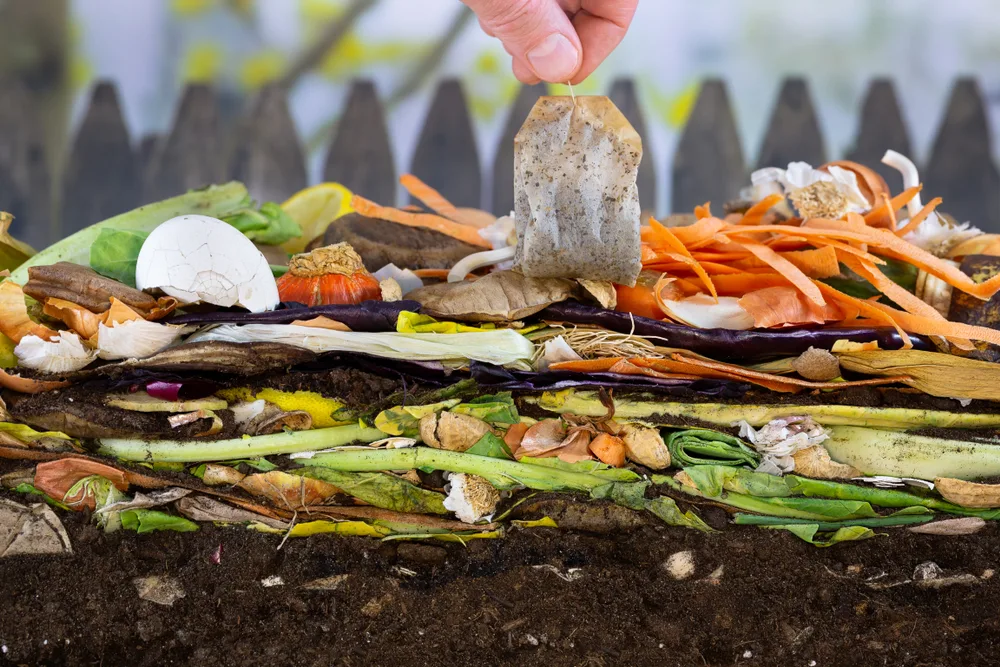
There are a number of common things that a lot of people compost but really shouldn’t.
It may sound really obvious, but don’t add things to your compost heap that won’t break down organically. Most plastics are not biodegradable, and so should not be included. And while you may find it surprising that people do put plastics into their composting systems, there are many hidden plastics that do make their way in.
For example, some people put drier lint, or the contents from a vacuum cleaner into their composting bin. But these usually include micro-plastic particles from synthetic clothing or carpets.
Another hidden source of plastic in the compost is teabags. Check to make sure your bags are plastic free before you add them to your composting system.
13. Adding Hazardous Material
It may also seem obvious that we should not add hazardous materials. Of course, we should take great care to ensure that harmful household cleaning products and other environmentally polluting materials don’t accidentally find their way into the compost.
We should also make sure that we don’t risk our health by including materials that could harbor pathogens harmful to human health.
For example, humanure systems can be a way to recycle human waste into the system. But composting humanure is a more specialist process, requiring high temperatures to make sure pathogens are killed. So don’t be tempted to just add the contents of a composting toilet to a general composting system without doing your research.
Dog and cat feces (and the feces of other carnivores) should also not be added, due to pathogen risks. (But chicken, rabbit and other small pet/livestock manures will be just fine in many composting systems.)
14. Adding Diseased or Problematic Plant Materials
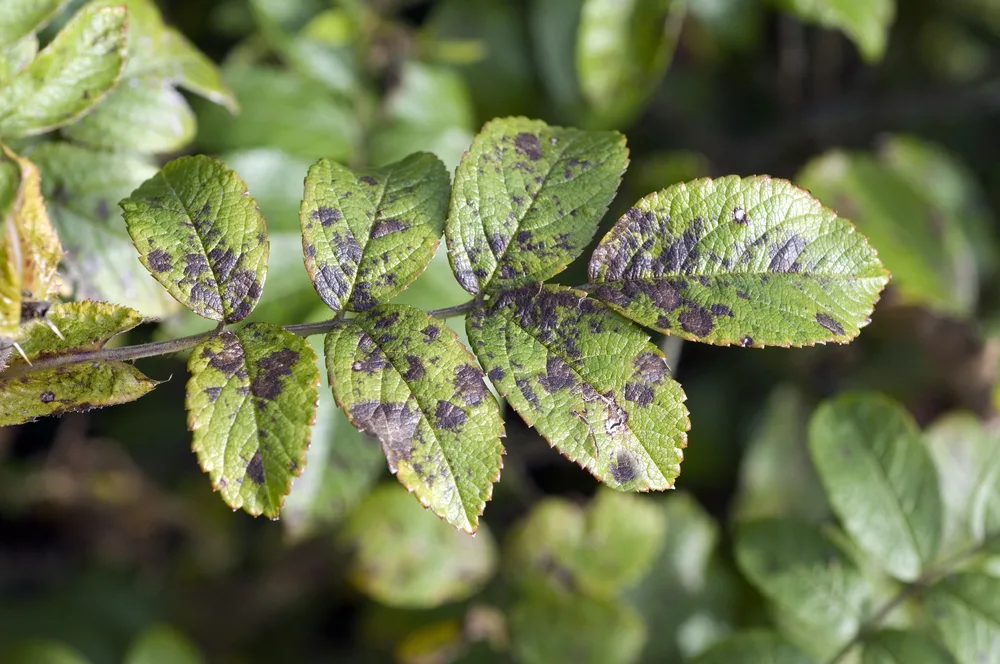
Another mistake gardeners make is adding all plant material to their composting system, no matter what diseases it may carry.
When you remove diseased plant material from your garden, you should never add it to your composting system.
Be sure to dispose of it carefully, well away from your compost and your growing areas, so the disease does not spread.
As well as avoiding adding diseased plant materials, it is also important to make sure you don’t add weed seeds or weeds that regrow from root sections to your composting system.
Add these problematic plant materials to your compost, and when you spread it on your garden, you could find these weeds popping up all over the place. Caution is especially important when it comes to very invasive, non-native plant species.
15. Adding Things That Will Take Too Long To Decompose
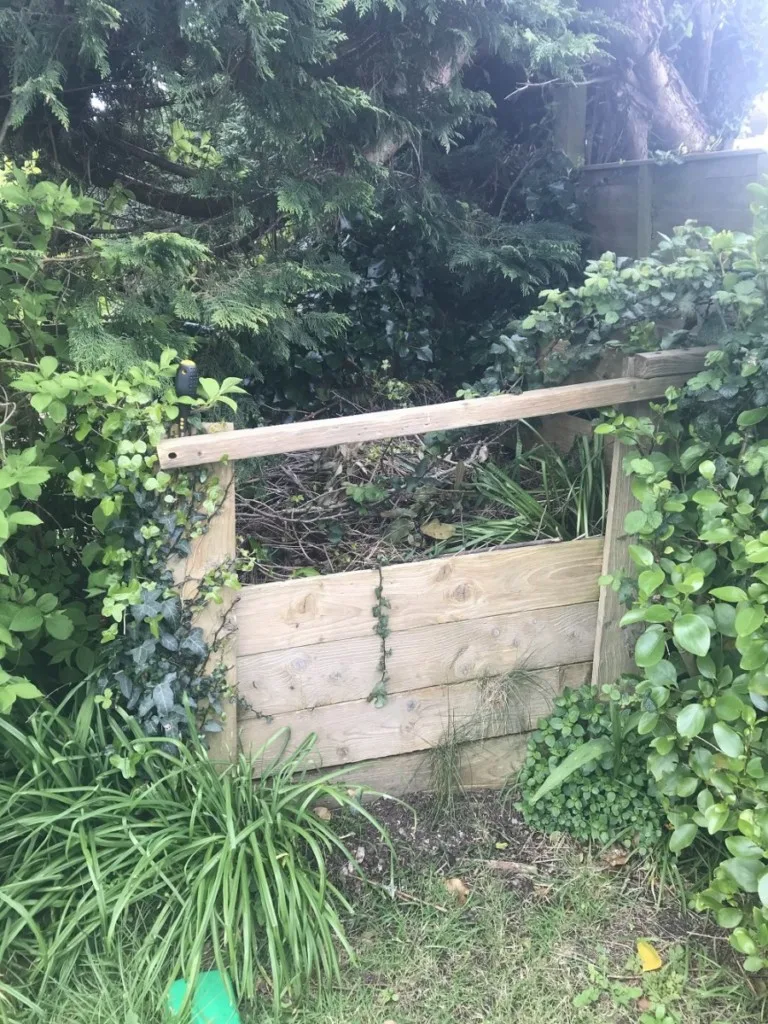
While wood shavings and smaller woody pieces can be perfect things to add to your compost heap, larger woody pieces take much longer to break down.
So if you want to create a good, crumbly compost to use in your garden, it is not a good idea to add things that will take too long to break down.
Other things that will decompose eventually, but will take much longer to do so include avocado pits, some natural fibres and fabrics, and longer hair.
These latter two items are best chopped into tiny pieces if you wish to add them to your main composting system.
16. Adding Meat (to a Cold Composting System, Without Fermenting With a Bokashi System First)
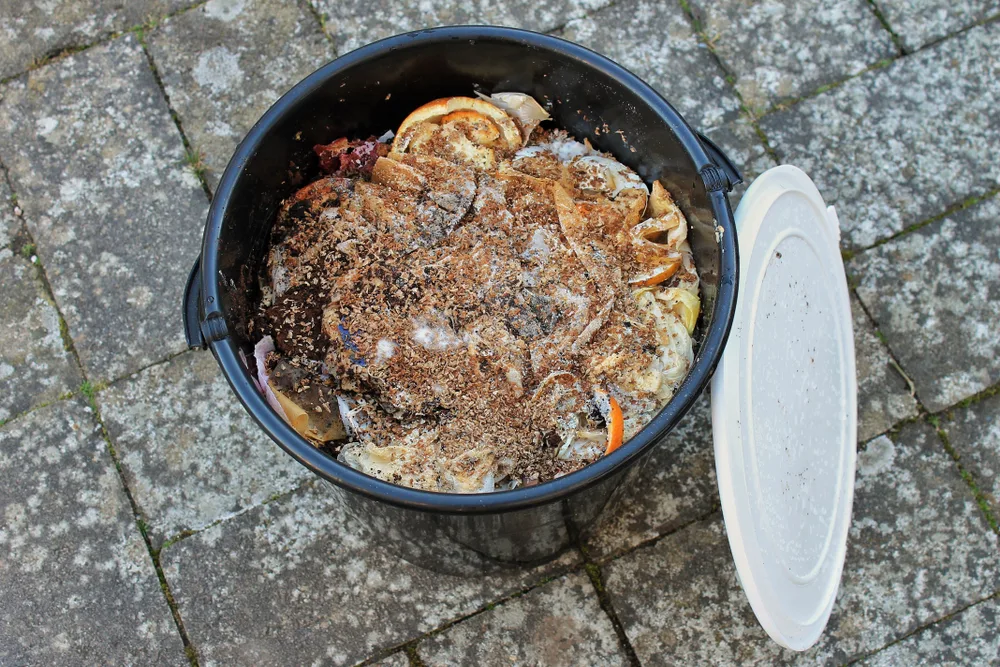
There is a myth that you should never add meat to a composting system. But the truth is rather more nuanced.
Meat and dairy can be composted at home in a range of different ways – you just need to choose the right methods.
It is usually not really a good idea to add animal derived products to a simple cold composting system, mostly because it can increase problems with flies, rodents, and other scavengers. It may also cause the compost to start to stink.
Meat can be added, carefully and in moderation, to a hotter composting system. There are several ways to make a hot composting system suitable for this, and other materials not usually composted in cold composting systems. Meat waste can also simply be buried, deep, in your garden, where it will add fertility over time.
However, in my option, one of the best options is to use a bokashi bucket system to ferment foods like these prior to adding them to your main composting system.
17. Adding Items That Change the Ph of the Compost Too Much
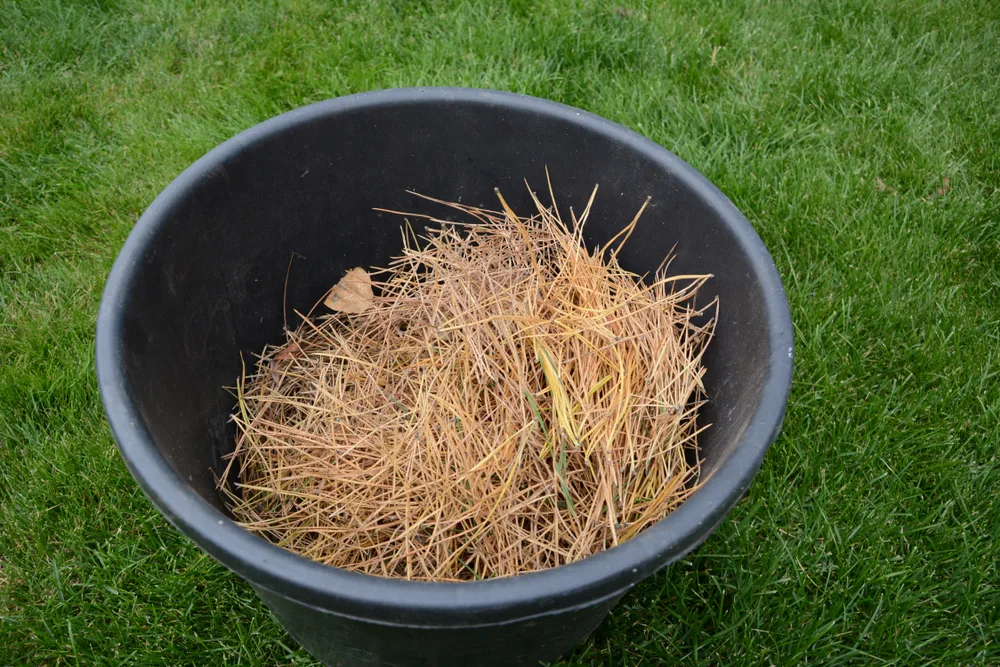
Other common composting myths tell you that you cannot compost onions, citrus peels etc.. But again, the truth is more nuanced.
In most composting systems, these and other such items are fine, as long as they are only added in moderation, in small quantities at a time. Adding too much of these things in one go, however, can cause problems by throwing off the pH balance in your composting system.
Other things that can throw off the pH balance in a compost heap include pine needles (and the needles of other conifers), and wood ash.
Again, these things are usually fine to add in smaller quantities. You can also consider keeping pine needles aside to make an ericaceous compost for acid-loving plants, rather than adding them to your main composting system.
And you’ll find plenty of uses for wood ash around your home and garden.
18. Not Keeping Food Scraps Covered Up
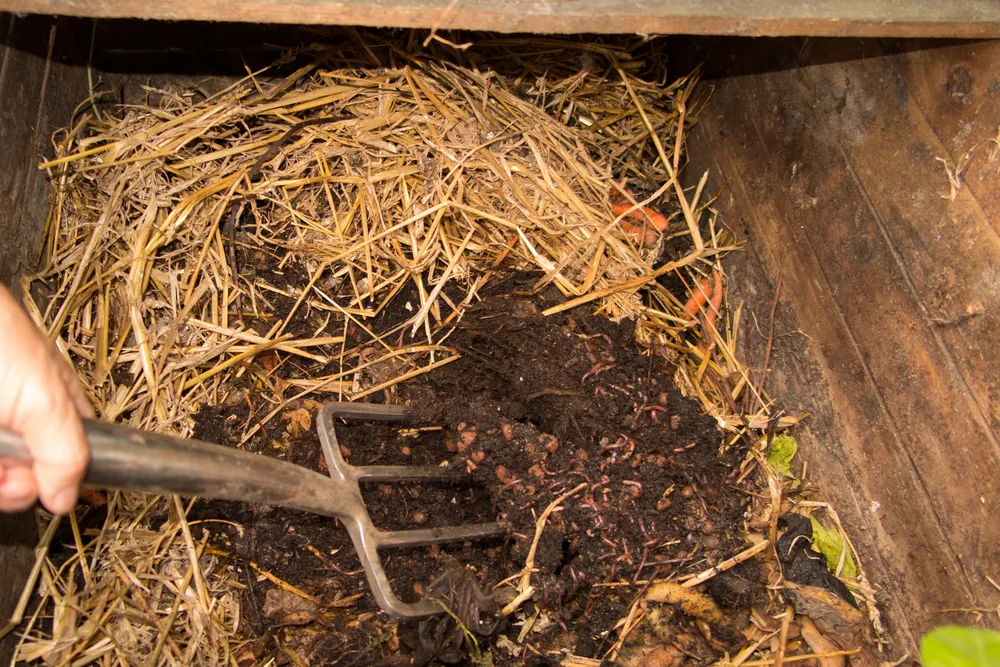
In any composting system, it is a good idea to get used to covering up food scraps with a carbon rich material like cardboard, wood shavings or straw every time you add them.
Keeping food scraps covered up will help make sure you don’t get problems with flies, or with any scavengers if you are composting outside in your garden.
19. Not Thinking About the NPK Balance in the Compost
If you want to take your composting to the next level, it is great to think about the nutrient content of the compost you create.
Adding a good variety of materials should allow you to maintain a good balance of nitrogen, phosphorus and potassium – the three main nutrients for plant health.
But if you add too few ingredients to your compost (too many grass clippings, for example) it may not have the nutrient balance you want.
The N-P-K ratio of compost usually varies from 1.5-0.5-1 to 3.5-1-2. By varying what is included in your compost you can vary its value as a soil amender or growing medium.
20. Not Considering Other Nutrients for Plant Health
Nitrogen, phosphorus and potassium are the most important plant nutrients. But plants also need other nutrients in order to grow.
If you want to create the best compost possible, you should also think about how to incorporate materials that, when they decompose, will release other trace nutrients.
By thinking about the nutrient composition of your compost, you can take it up a notch and really step up your game as an organic grower.
Adding a range of different dynamic accumulators to your compost heap is one important way to add various nutrients to your compost that you feel may be lacking in certain parts of your garden.
These 20 common mistakes are all rather easy to avoid. So next time you get confused about composting, or think it is to difficult where you live, think again.
A few simple steps is all it takes to create great compost, prevent food waste from being sent to landfill, and recycle nutrients in this most natural of ways.
Read Next: Can I Compost That? 100+ Things You Can & Should Compost

Get the famous Rural Sprout newsletter delivered to your inbox.
Including Sunday musings from our editor, Tracey, as well as “What’s Up Wednesday” our roundup of what’s in season and new article updates and alerts.


